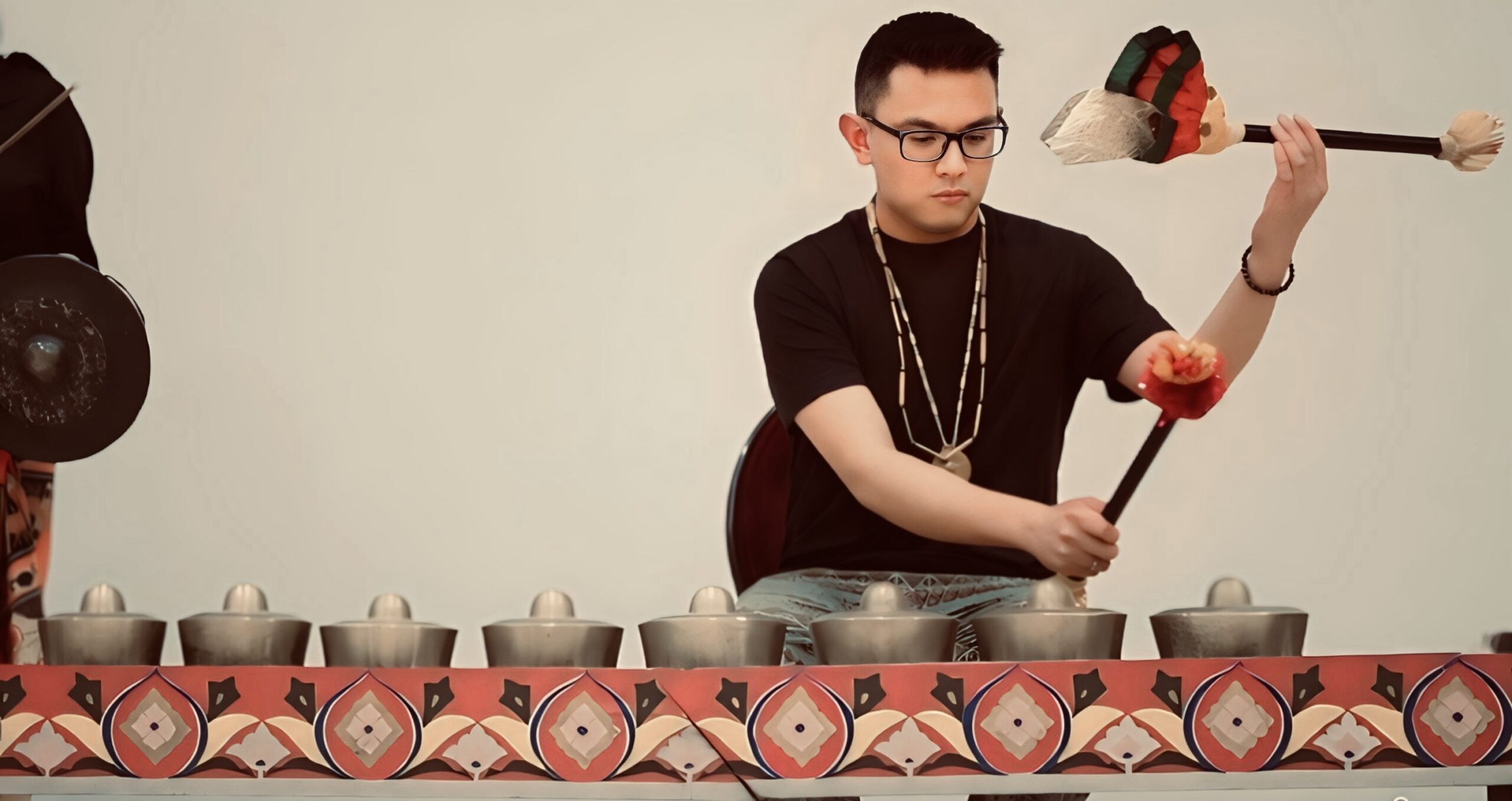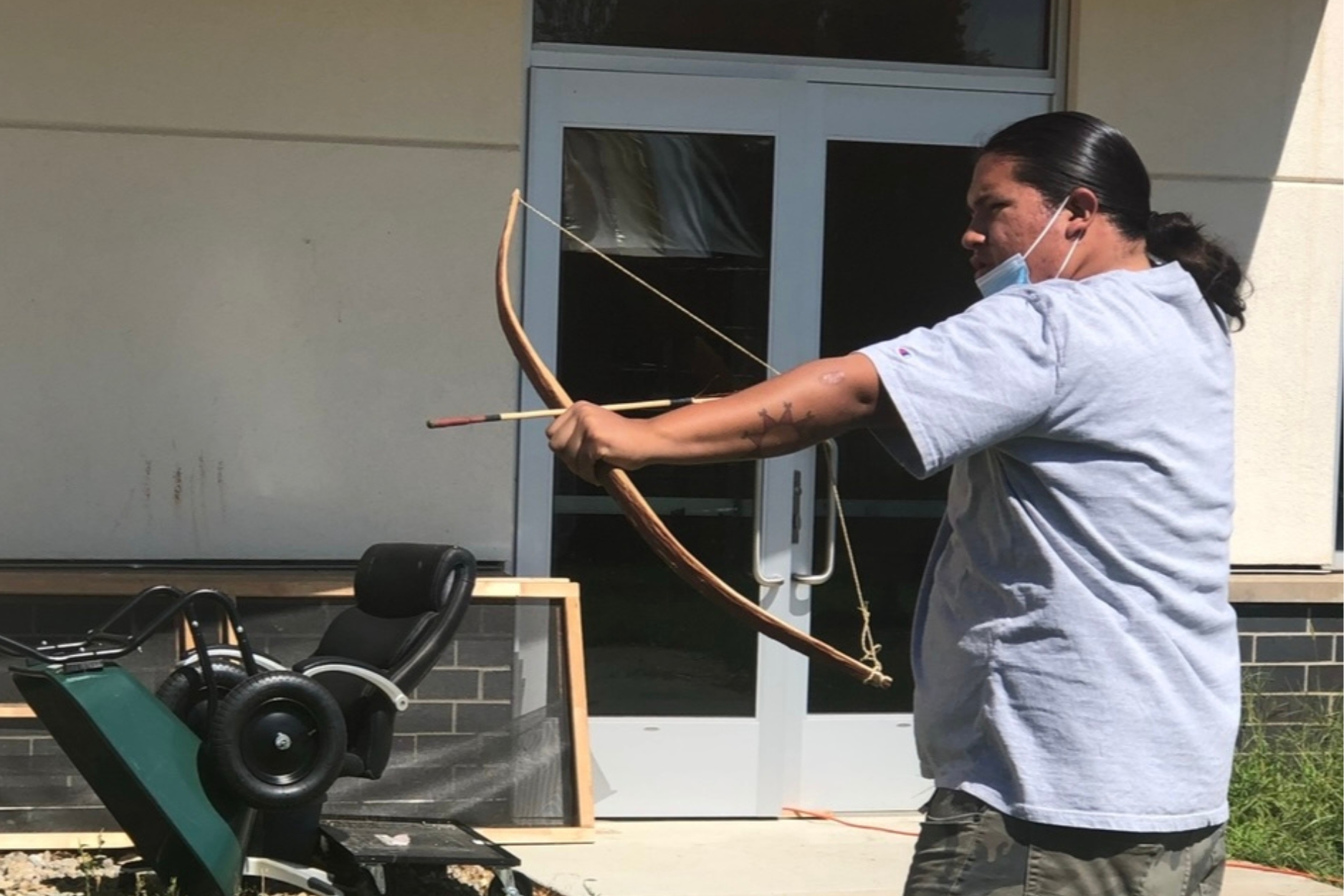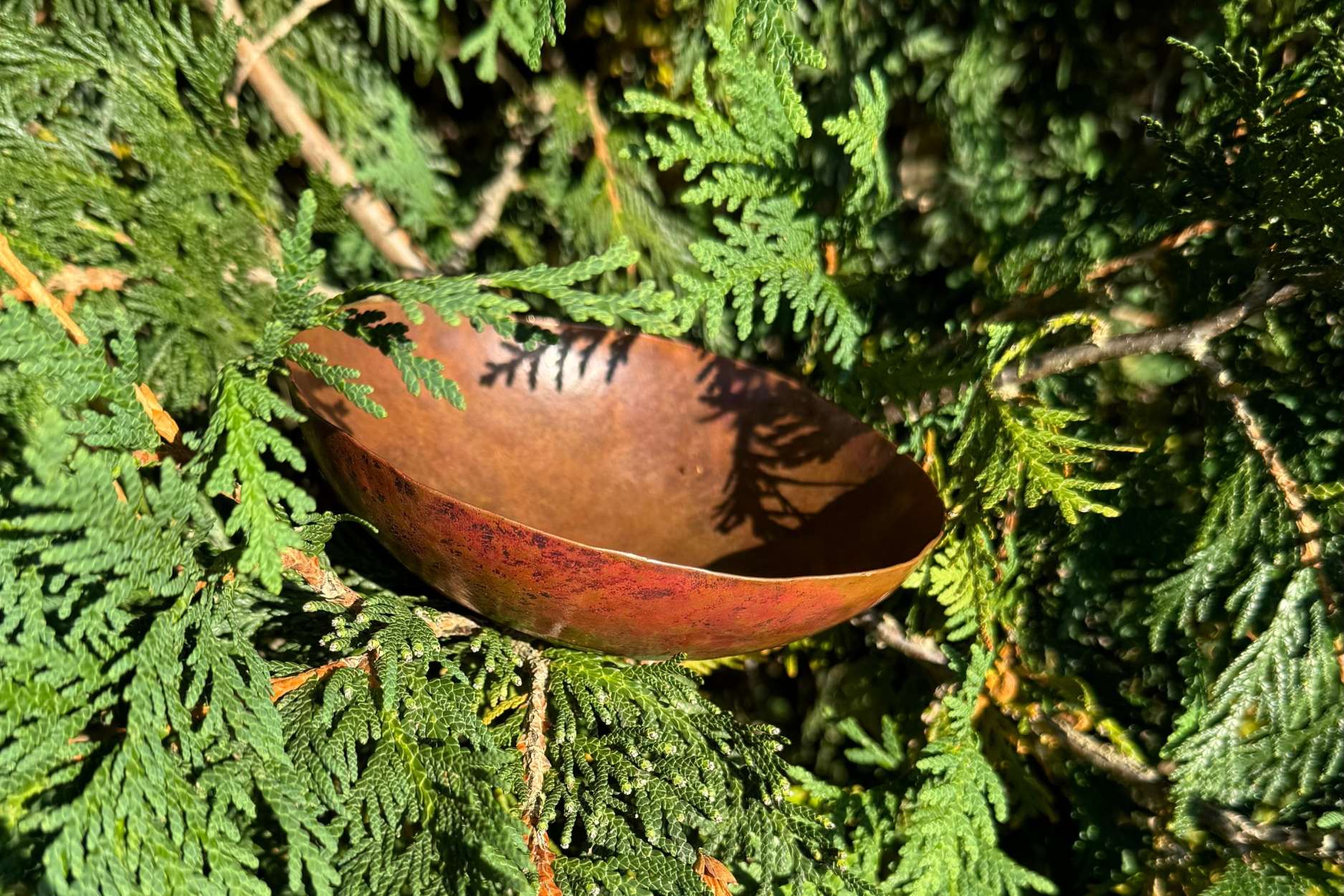Arts Midwest is thrilled to announce the recipients of the inaugural Midwest Culture Bearers Award. This award was created to annually honor and amplify the work of Midwestern folk arts and culture practitioners who are deeply rooted in the practice and preservation of their cultural traditions through craft, storytelling, dance, performance, visual arts, language preservation and more. Over 250 culture bearers applied for this opportunity, and a panel of 12 application reviewers helped narrow it down to nine finalists from across the Midwest.
We’re delighted to recognize nine culture bearers and folk arts practitioners who are doing the important work of preserving cultural traditions rooted in community and prioritizing the next generation across our region:
- Rubén Pachas (Schaumburg, Illinois)
- Stafford Berry (Bloomington, Indiana)
- Tamra Jetter (Clinton, Iowa)
- Gean Vincent Almendras (Ann Arbor, Michigan)
- Paul Summers (Worthington, Minnesota)
- Pieper Bloomquist (Grand Forks, North Dakota)
- Aimee Lee (Lyndhurst, Ohio)
- Jeremy Red Eagle (Waubay, South Dakota)
- Martha Buche (Viroqua, Wisconsin)
Rubén Pachas (Illinois)
“I am a teacher and artist who researches, preserves, instructs in and disseminates Peruvian indigenous culture through the arts of music and dance via classes, workshops and presentations to communities in Chicago and in Peru.
As co-founder and artistic director of the Center of Peruvian Arts, I design and create typical dances and costumes, then produce, and participate in theatrical Peruvian productions that emphasize the connections in Incan cosmology between humans and stars, Nature and the entire universe.
My work in this vein has fostered knowledge and enjoyment of Peru’s rich cultural heritage in diverse communities, and even kindled people’s desire to visit the country. It also helps his countrymen living abroad to explore their roots and feel pride in their identities, encouraging them to value their culture and share it with others.”

Stafford Berry (Indiana)
“I’m an African American practitioner of African-rooted dance, and I represent the legacy of Baba Chuck Davis (my dance father) and Dr. Kariamu Welsh (my dance mother). I’ve been teaching African-rooted dance and theater in Indiana and Ohio for 15 years; currently, I am a Professor of Practice in African American and African Diaspora Studies and Theatre, Drama, and Contemporary Dance at Indiana University, where I am Director of the legendary IU African American Dance Company.
My work is deeply rooted in the practice and preservation of African dance traditions and their contemporary functionality for marginalized people in the U.S. As a sought-after teacher, elder, knowledge bearer (Griot), and practitioner of African-rooted dance, my work preserves and extends African American culture and its relationship to its African ancestry. I do this work with my dancing communities across the country: Baba Stafford & Company, Baba’s Rising Sons, Dayton Contemporary Dance Company, AADC, and others.
African American people are losing many African traditions. My work values technology and contemporary society along with tradition, while upholding movement practices that sustain Black bodies as archive of cultural practice. For example, I staged on AADC, Doundounba, a traditional “dance of the strong man, or dance of the big drum” from Guinea, West Africa. After a few iterations, I renamed the work ‘Strong People Dance’ to better serve my dancing community in (re)claiming our cultured past while acknowledging our contemporary identities. My work centers the Africanist and Queer communities to which I belong and in the spirit of Ubuntu, ‘I am because we are.'”

Tamra Jetter (Iowa)
“I nurture, inspire, transmit, transform and expressively connect community on a beautiful continuum of my rich African, African American, and Black woman cultural heritage. I bring people together to honor the past, heal the present and harmonize the future. I develop intergenerational programs, especially engaging youth, through my wellspring of ancestral wisdom in music, dance, art, fabrics, storytelling, foods, crafts, writing, films, poetry, vision boards, history, lands, and language.
Authenticity is very important to me. Some culture bearers specialize in one or two genres, but I promote and provide opportunities for programs encompassing all cultural genres. Through my commitment to lifelong learning, travel, reading, creating relationships, and engaging with people, I continually discover, design, and develop creative ways to increase cultural understanding and bring about change. My family and I have shared artifacts and made many contributions to the African American Museum of Iowa in Cedar Rapids. I coordinate and sponsor Juneteenth and Black History Month programs honoring Pan African colors of red, black and green, and invite Black artists, poets, fashion designers, dancers, singers, and musicians to actively participate, showcase their work and share their stories with the community.”

Gean Vincent Almendras (Michigan)
“As a Philippine music practitioner, much of my work revolves around preserving and celebrating Kulintang, an indigenous Philippine musical tradition featuring eight melodic gongs, accompanied by an ensemble of larger gongs and drums.
Immigrating to Michigan at the age of eight, I grew up immersed in Western pop culture and the English language, which distanced me from my Filipino community and my roots. In late 2013, my mother and I, alongside dedicated scholars and elders from the Filipino-American community in Michigan, co-founded the Philippine Arts & Culture Ensemble of Michigan (PACE-MI), a nonprofit organization committed not just to build community, but also to teaching and preserving Philippine traditional arts and culture through the performing arts. Through PACE-MI, I began an immersive journey to reconnect with my heritage, discovering the rich and beautiful oral tradition of Kulintang music by learning directly from indigenous Philippine master artists, scholars, and cultural bearers.
Through these practices, we have been able to contribute to our Filipino-American cultural identity by offering educational workshops, staging authentic performances, and developing curricula that highlight the historical and artistic significance of Kulintang, among other Philippine art forms. This work not only supports an ancient tradition but also ensures its relevance for future generations in the diaspora. By honoring this musical practice and the practitioners who came before me, I seek to affirm its place within our broad and diverse culture, enriching our community’s understanding and appreciation of our ancestral heritage.”

Paul Summers (Minnesota)
“I was one of the Native American children adopted at birth and removed from America’s Indian reservation system. I was raised in a small white middle class farming community in SW MN but never told I was American Indian. At the age of 38, I found my biological family and was reunited on the Lower Brule Sioux Indian Reservation. My newly realized heritage opened many new doors, including the founding of the American Indian music and dance group Brulé. At that time, I dedicated the balance of my life to working on reconciliation of the cultures and to use the music of Brulé as my medium. This mission has had an inspiring impact on the next generation of tribal youth as performances and residencies have taken place in Native American communities.
I’ve produced over 100 episodes of the TV show ‘Hidden Heritage’ for RFD-TV that share positive and uplifting stories from across Native America. I’ve also produced several concert specials for PBS and, in keeping up with the times, recently began producing a podcast of the same name. I began doing this work over 30 years ago. Recently, I received the Lifetime Achievement Award at the Native American Music Awards.”

Pieper Bloomquist (North Dakota)
“I am a contemporary folk artist working in the traditions of Swedish bonadsmålning and dalmålning (kurbits) – the painted wall hangings that decorated the interiors of Swedish farmhouses in the 18th and 19th centuries. During this time, my great grandparents along with many other Swedes, immigrated to the Upper Midwest. The memory of these paintings came with them, and the images that reflected the lives of the peasant class have become rich symbols of Swedish culture and heritage.
Using common floral motifs and decorative elements of these art forms, along with the traditional materials of linen and homemade paints of egg tempera or animal glue, I create painted tapestries with scenes that narrate modern human stories. I draw inspiration from family traditions, my experience as an oncology nurse working with life and death, rural life in the Upper Midwest, as well as current events such as the Covid-19 pandemic.
Over the past 25+ years I have been a teacher, vocal advocate, and overall ambassador of sorts of Swedish folk painting. I have earned two Cultural Fellowships through the American Scandinavian Foundation to study in Sweden in order to perpetuate these folk arts in both Sweden and the United States.”

Aimee Lee (Ohio)
“I practice Korean papermaking and allied crafts: making hanji (Korean paper), jiseung (hanji basketry), joomchi (texturing and fusing hanji), natural dyes, and toolmaking (bamboo screens to make hanji). I share these practices widely in person, in print, and online, to raise awareness and appreciation for Korean paper culture, history, folklore, and global impact.
Born in the US to Korean immigrants, I began to research hanji in 2007 and earned two Fulbright grants and a Kittredge grant for multiple trips to Korea starting in 2008. I studied with national and regional bearers of intangible heritage and conducted my research in Korean. I built and enhanced the first hanji studios in North America, wrote a book about hanji, share print and digital resources about my ongoing research, and teach widely.
I contribute to Korean and American culture by safeguarding Korean papermaking through documentation and practice, while growing an American branch of hanji. Bilingual, I can navigate Korean and American cultures to translate and share hanji with wider audiences, which supports Korean efforts, and am the go-to hanji expert for academic, professional, and private projects. Alongside my students, my multi-faceted work evolves hanji’s future in the US and abroad.”

Jeremy Red Eagle (South Dakota)
“I am a traditional Dakota/plains style bowyer. I make our authentic Dakota style bows, arrows, quivers and related tools. I have taught a minimum of six different workshops/classes as well as a handful of presentations. All being done in Dakota communities such as, Sisseton, Lake Andes and Flandreau SD, Lower Sioux Indian community, and for Ft Peck and Spirit lake community Colleges.
It is my goal to revitalize our bow making and to use it to help our young men reconnect with their roles and responsibility in our communities. I have traveled all over Indian country learning from different people that posses the knowledge of our traditional bow and arrows. In our oral traditions, our bow and arrows have many stories and teachings connected to them besides just their practical use in hunting and protection. I have also spent years learning and documenting our Dakota language connected to the bow and arrow.”

Martha Buche (Wisconsin)
“I was raised outside Potawatomi culture, much of that cultural legacy lost due to survival through assimilation.
I went in search of my heritage in my twenties, seeking culture, crafts and traditions for myself. I became culture-bringer to own family and was given the name of ‘Spirit Keeper’ in recognition. Over decades, my siblings and I have rediscovered language, traditions, beliefs and crafts. I have long sought and now practice many traditional arts. I’ve shared these broadly in my roles as artist and educator, in my family, community and the Midwest.
As an artist, I have been drawn to and have practiced many traditional arts: ash splint, bark, sweetgrass, cattail, and pine needle basket making, drum, clothing, and moccasin making, quilling and various styles of beading, corn husk doll and other toy making, and copper work. I have been recognized for teaching hammered copper bowls. I learned and teach this technique using the ancient method, with stone tools, in the manner of Lake Superior’s native peoples. Copper vessels are used in ceremony and teaching this craft shares the culture and traditions of my Potawatomi heritage. I celebrate my hard sought and nearly lost Potawatomi heritage through this practice.”
